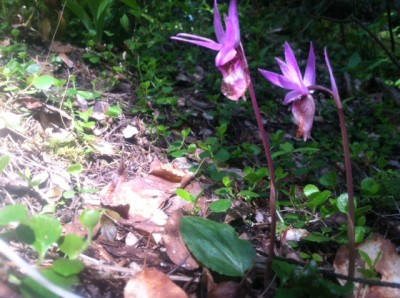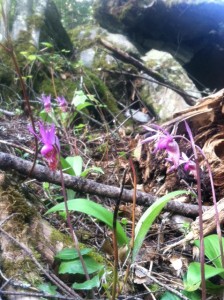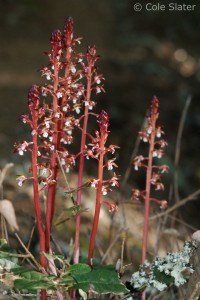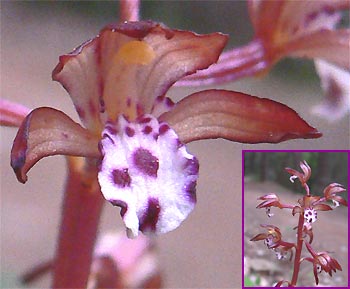I am a wildflower nut. I drive any hiking partner crazy by pausing, or stopping , and pointing out any wildflower along the trail. Then, once back on track, I continue to blabber about the history, scientific discovery, genesis and species of the find.
Ya, it’s annoying. But all of you anglers or hunters out there know just as well as me that when you are hunting for something amazing in the wilderness, it is hard to contain yourself when you find it.
But, it is even harder to contain yourself when you find it, can’t shoot it, or hook it, and there is nobody else around to annoy with your excitement.
Well, that’s exactly what I felt when I was hiking alone along Bass Creek in the Bitterroot mountain range last week and stumbled across the elusive Fairy Slipper Orchid!
So, I did what any enthusiastic hunter would do. I picked it and mounted it above my fireplace….JUST KIDDING! I took a picture with my cellphone.

It may not be a big deal to some, but anyone who likes finding and identifying wildflowers in Montana…it is kind of a big deal. And I didn’t just find one, I found nearly a dozen growing together.

FWP printed and article describing the variety of wild orchids in Montana.
Orchid season in Montana begins in late April, when the first pinkish purple blooms of fairy slippers emerge in moist woodlands and mountain foothills. It ends when the spiraling flowers of ladies’ tresses begin to wither, usually in August.
Most Montana orchids grow around forests and near wetlands in the state’s western half. These perennials range from 3 inches to more than 3 feet tall. The individual blossoms are small but widely varied, ranging from the beautiful to the bizarre. Many people are familiar with the slipper-shaped blossoms, but orchids also resemble pixies, gargoyles, grinning elf faces, or cow heads complete with ears and horns. Some orchids have long, saberlike spurs; others are adorned with ribbonlike petals, helmets, or hoods. Just as diverse are the leaves, such as the snakeskinlike foliage of the northern
rattlesnake-plantain, or the saucer-sized leaves of roundleaf bog-orchids. And then there are the mysterious saprophytic orchids—known as coralroots—which have leafless stems of maroon or yellow.
See if you can hunt this one down this summer: Coral Root Orchid
From a distance it looks like a weed but up close, it is a beautiful orchid.

